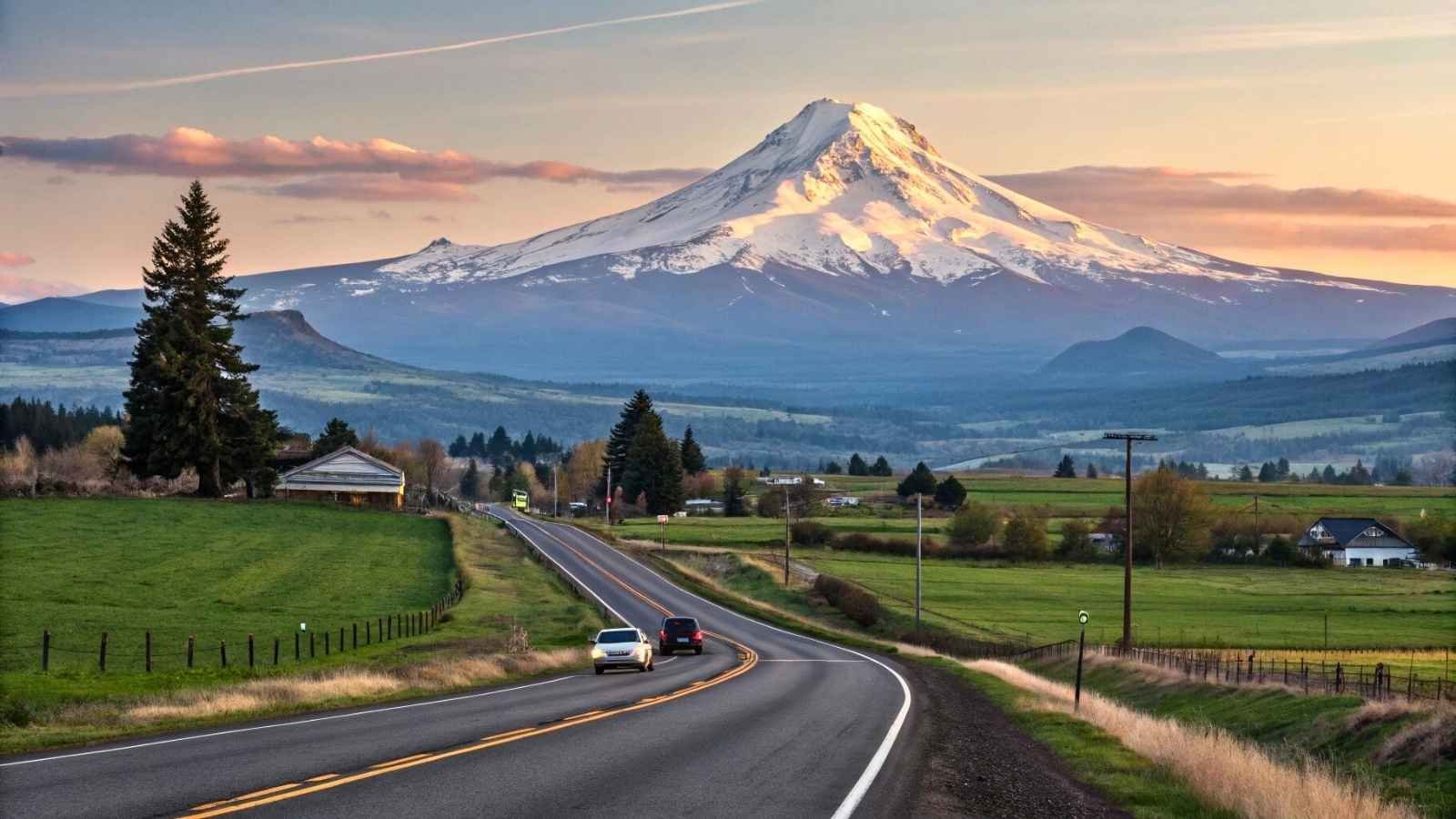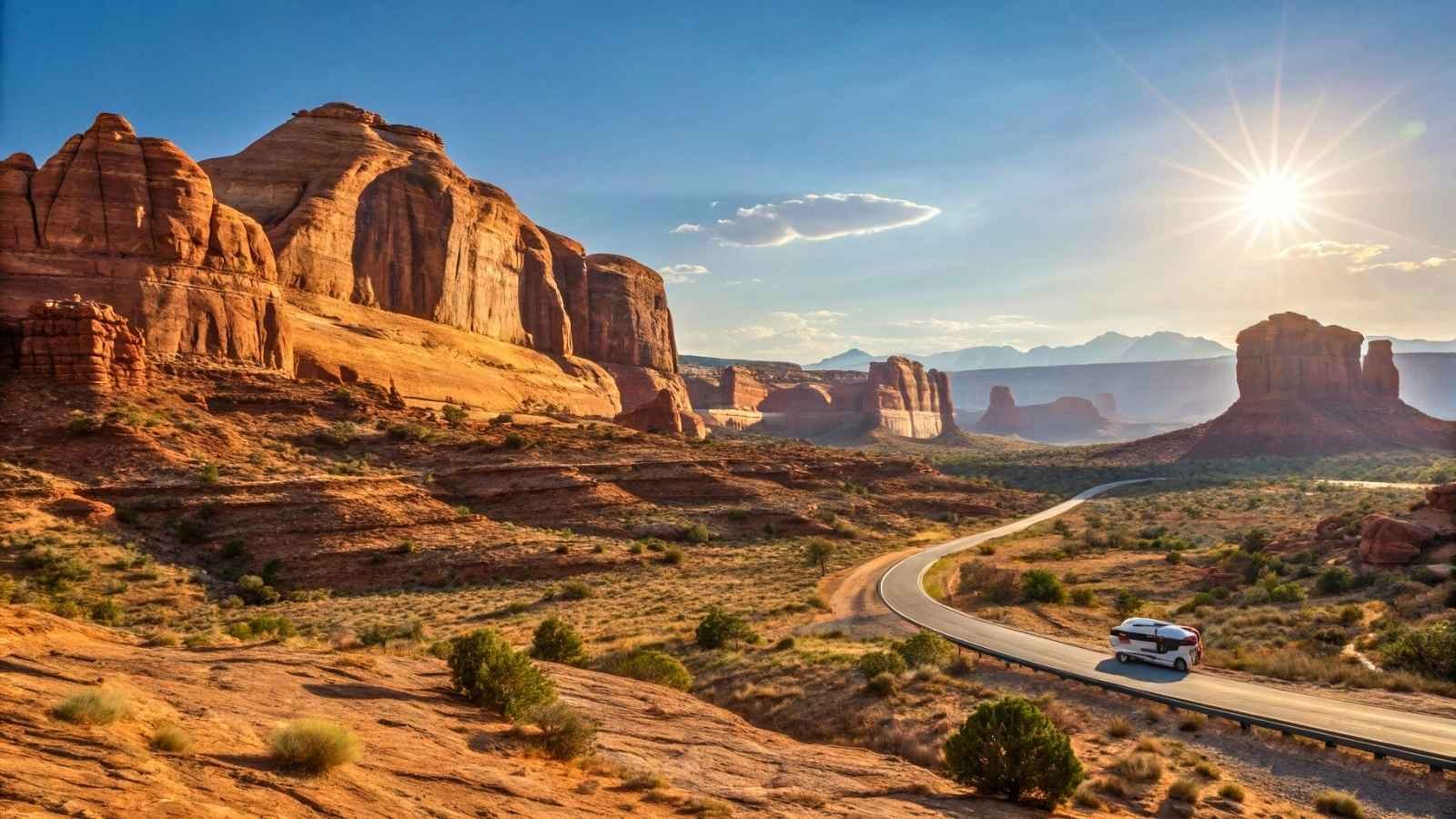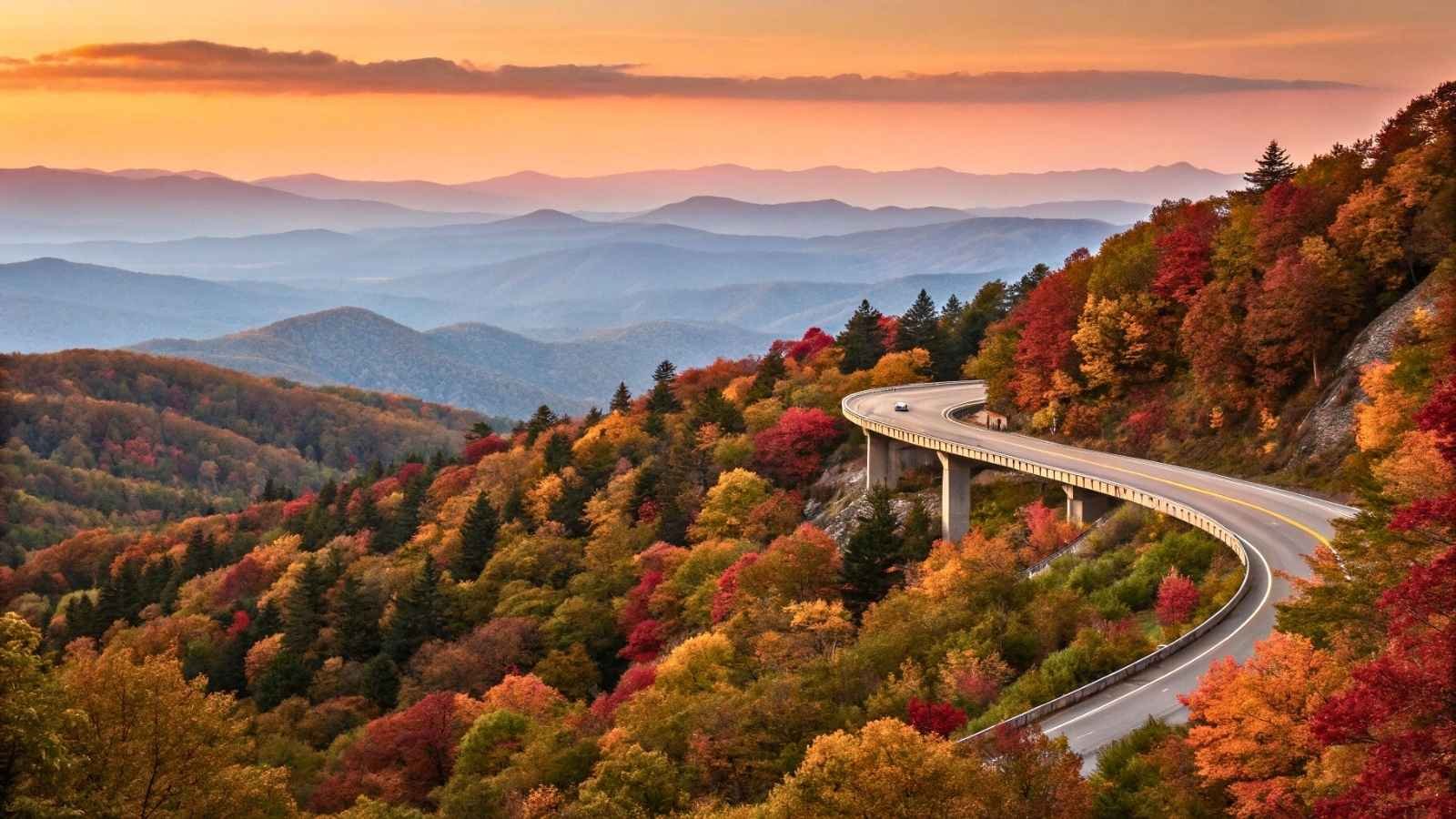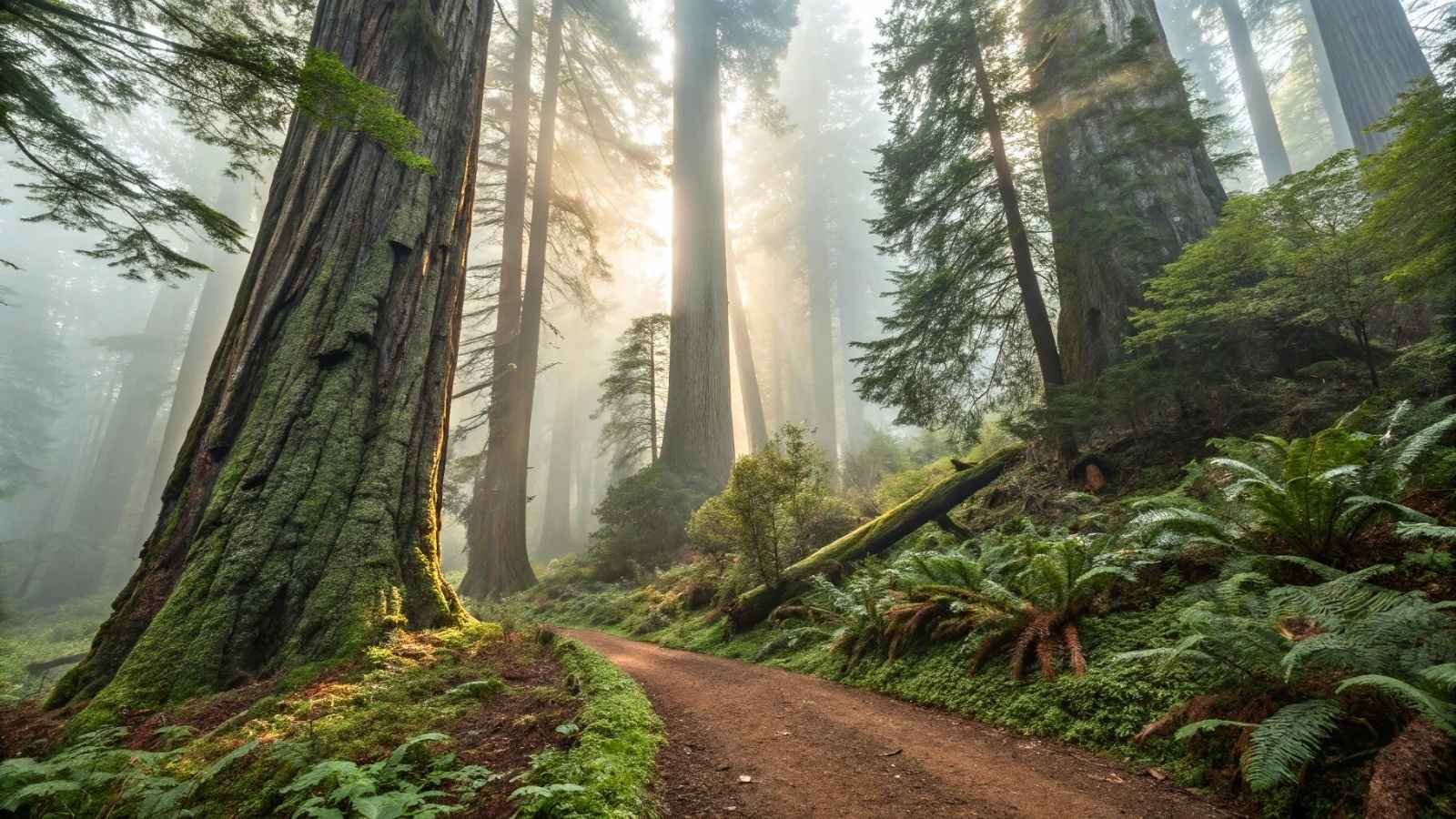
Something about the open road that feels like freedom in its purest form—windows down, snacks packed, no TSA lines in sight. You don’t need a pricey plane ticket or a foreign passport to chase the kind of landscapes that take your breath away.
Some of the most jaw-dropping views, world-class hikes, and unforgettable campfire nights are hiding right here at home, often for less than the cost of a takeout dinner. This isn’t just about budget travel. It’s about trading stress for stargazing, traffic for trailheads, and discovering that adventure was always closer than you thought.
1. Pacific Northwest Loop (Washington & Oregon)

This route is what you take when you want misty forests, volcanic peaks, and wild coastlines — the kind of scenery that gives Norway or Switzerland a real run for their money. Starting in Seattle, the loop wraps around Olympic National Park, cuts through Mount Rainier, sweeps down the Columbia River Gorge, and hugs the Oregon Coast before circling back. You’ll hike through temperate rainforests, wander past alpine lakes, and stop at coastal towns that still feel like secret finds.
What makes this route especially epic is the variety. One day you’re hiking in Hoh Rainforest under moss-draped trees, the next you’re scrambling up volcanic ridges near Mount St. Helens. The weather changes by the hour, so you get soft light for photography, and fewer crowds than many national parks.
And the kicker? If you camp (and you should), costs drop drastically. Even your food budget stretches when you hit up local farmers’ markets and do your campfire cooking. $75/day feels realistic here, especially in the shoulder seasons.
Need-to-Know:
- Best Months to Visit: June through September
- Start Point: Seattle, WA
- Epic Hikes: Hoh River Trail, Mount Storm King, Eagle Creek Trail
- Camping-Friendly: Yes — tons of public campgrounds
- Don’t Miss: Cannon Beach at sunrise, Ape Caves lava tubes, Rainier’s Skyline Trail
- Travel Tip: Gas up in small towns before hitting national park loops — stations are sparse in some sections
2. Utah’s Mighty 5 Road Trip

If Europe has the Dolomites, the U.S. answers back with Utah’s red rock cathedrals. This route stitches together Arches, Canyonlands, Capitol Reef, Bryce Canyon, and Zion National Parks — all within a few hours’ drive of each other. The landscapes feel otherworldly. You’ll walk under sandstone arches, down into slot canyons, and camp under stars so bright you’ll think you’re on another planet.
The hiking here is as hardcore or relaxed as you want. Zion’s Angel’s Landing delivers vertigo and views, while Capitol Reef’s Hickman Bridge is a quick but stunning trek. What’s remarkable is the low daily cost — many travelers keep this under $75/day by bundling the America the Beautiful Pass, camping, and cooking their meals in scenic spots.
It’s not just about scenery — there’s a quiet spiritual feeling here too. That desert silence hits differently. And yes, this is one of those places where sunrise and sunset live up to the hype.
Need-to-Know:
- Best Months to Visit: April–May, September–October
- Start Point: Salt Lake City or Las Vegas
- Epic Hikes: Angel’s Landing, Delicate Arch, The Narrows, Cassidy Arch
- Camping-Friendly: Absolutely — dispersed camping is abundant
- Don’t Miss: Scenic Byway 12, Goblin Valley (bonus stop), sunset at Bryce
- Travel Tip: Bring layers — temperatures swing wildly between day and night
3. Blue Ridge Parkway (Virginia to North Carolina)

This route doesn’t shout — it sings. It’s slow, misty, and full of rolling mountains, Appalachian charm, and the kind of trails where you forget about time. Starting in Shenandoah National Park and running south through the Smokies, the Blue Ridge Parkway is often called “America’s Favorite Drive” — and for good reason.
You’ll cruise through tunnel after tunnel of vibrant green (or fiery orange if you’re lucky enough to hit fall). The hikes range from easy to strenuous, and many are accessible straight off the road. Craggy Gardens, Mount Mitchell, and Linville Gorge give you sweeping vistas for minimal investment — or go big with overnight treks on the Appalachian Trail.
There’s an unexpected European vibe here too — especially in the Blue Ridge music culture, small mountain towns with bakeries, and cozy inns with rocking chairs out front. And costs? Campgrounds are dirt cheap and scattered throughout.
Need-to-Know:
- Best Months to Visit: Mid-April to early June, late September to late October
- Start Point: Front Royal, VA
- Epic Hikes: Humpback Rocks, Black Balsam Knob, Rough Ridge
- Camping-Friendly: Plentiful along the Parkway
- Don’t Miss: Little Switzerland (yes, really), Mabry Mill, sunset at Waterrock Knob
- Travel Tip: No billboards, gas stations, or fast food on the Parkway — plan ahead
4. Colorado Rockies Scenic Byways

This trip feels like driving through a painting. The Colorado Rockies pack in jagged peaks, alpine lakes, historic towns, and roads that practically defy gravity. You’ll follow a network of scenic byways like the San Juan Skyway, Trail Ridge Road, and Independence Pass, each one more dramatic than the last.
Here, hiking isn’t just available — it’s epic. Think: the Maroon Bells, Ice Lakes Basin, or even a day in Rocky Mountain National Park. The altitude adds some challenge, but that just makes the views more rewarding. And those switchbacks? Worth every nerve.
Travel here is surprisingly affordable if you skip the ski resorts and stay in forest service campgrounds or free dispersed areas. The byways wind through mining towns like Ouray and Silverton, where you can grab hearty meals and still stay on budget. You’ll feel like you stumbled into a less-crowded version of the Alps.
Need-to-Know:
- Best Months to Visit: Late June to early October
- Start Point: Denver, CO, or Durango, CO
- Epic Hikes: Ice Lakes Basin, Emerald Lake, Bear Lake Loop
- Camping-Friendly: Yes, especially near Leadville and Gunnison
- Don’t Miss: Million Dollar Highway, Telluride’s Bridal Veil Falls, Maroon Bells sunrise
- Travel Tip: Altitude sickness is real — hydrate and acclimate
5. Northern California to Southern Oregon (Redwoods & Coastline)

If there’s a more magical stretch of road than Highway 101 from Northern California’s Redwoods into Southern Oregon’s coastline, we haven’t found it. These aren’t just trees — they’re living monuments, thousands of years old. And when that fog rolls in off the Pacific, the whole world feels hushed.
This route is a dream for hikers. Trails like Fern Canyon or the Boy Scout Tree Trail weave through moss-covered ravines and towering groves. Head north and you’ll hit Samuel H. Boardman State Scenic Corridor, where coastal hikes give way to hidden beaches and dramatic arches — think Ireland, but wild and empty.
It’s also a gold mine for budget travelers. Free beachside campgrounds, small-town diners, and forest service land make $75/day easy to stick to. And you won’t be rushing — this is slow travel at its best, where the journey is the destination.
Need-to-Know:
- Best Months to Visit: May through October (avoid winter rains)
- Start Point: Eureka, CA or Crescent City, CA
- Epic Hikes: Fern Canyon, Damnation Creek Trail, Natural Bridges
- Camping-Friendly: Yes, from beach bluffs to redwood groves
- Don’t Miss: Avenue of the Giants, Oregon Dunes, Gold Beach
- Travel Tip: Fog often clears by late morning — don’t skip early hikes, just bring layers






